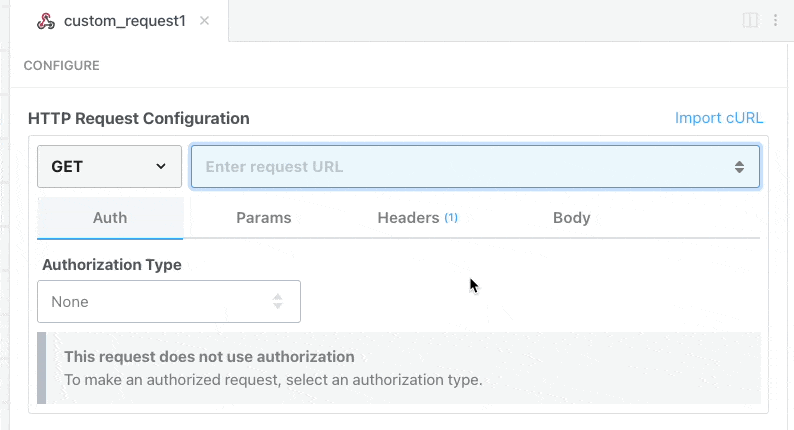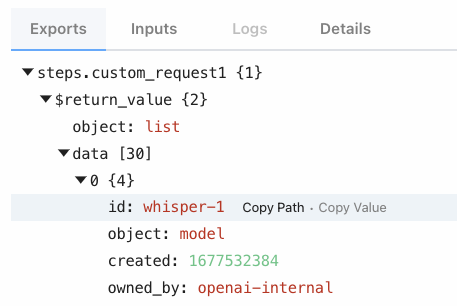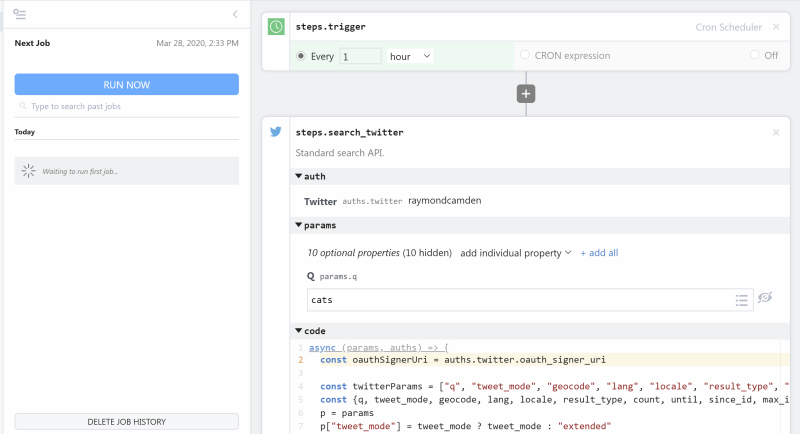What do you want to automate
with HTTP / Webhook and Mailgun?
Prompt, edit and deploy AI agents that connect to HTTP / Webhook, Mailgun and 3,000+ other apps in seconds.
Trusted by 1,000,000+ developers from startups to Fortune 500 companies
Popular Ways to Connect HTTP / Webhook with Mailgun#
Popular HTTP / Webhook and Mailgun Triggers#
Get a URL and emit the full HTTP event on every request (including headers and query parameters). You can also configure the HTTP response code, body, and more.
Get a URL and emit the HTTP body as an event on every request
Emit new event when the content of the URL changes.
Emit new event when the email recipient could not be reached.
Emit new event when the email recipient clicked on a link in the email. Open tracking must be enabled in the Mailgun control panel, and the CNAME record must be pointing to mailgun.org. See more at the Mailgun User's Manual Tracking Messages section
Popular HTTP / Webhook and Mailgun Actions#
Send an HTTP request using any method and URL. Optionally configure query string parameters, headers, and basic auth.
Delete a mailing list member by address. See the docs here
Send an HTTP GET request to any URL. Optionally configure query string parameters, headers and basic auth.
Overview of HTTP / Webhook#
Build, test, and send HTTP requests without code using your Pipedream workflows. The HTTP / Webhook action is a tool to build HTTP requests with a Postman-like graphical interface.

Point and click HTTP requests
Define the target URL, HTTP verb, headers, query parameters, and payload body without writing custom code.

Focus on integrating, not authenticating
This action can also use your connected accounts with third-party APIs. Selecting an integrated app will automatically update the request’s headers to authenticate with the app properly, and even inject your token dynamically.

Pipedream integrates with thousands of APIs, but if you can’t find a Pipedream integration simply use Environment Variables in your request headers to authenticate with.
Compatible with no code actions or Node.js and Python
The HTTP/Webhook action exports HTTP response data for use in subsequent workflow steps, enabling easy data transformation, further API calls, database storage, and more.
Response data is available for both coded (Node.js, Python) and no-code steps within your workflow.

Connect HTTP / Webhook#
// To use any npm package on Pipedream, just import it
import axios from "axios"
export default defineComponent({
async run({ steps, $ }) {
const { data } = await axios({
method: "GET",
url: "https://pokeapi.co/api/v2/pokemon/charizard",
})
return data.species
},
})
Overview of Mailgun#
The Mailgun API on Pipedream is a potent tool for automating email operations without the overhead of managing a full-fledged email server. It offers capabilities to send, receive, track, and store emails with ease. With Pipedream's serverless platform, you can trigger workflows using Mailgun events, such as inbound emails or delivery status changes, and connect them to hundreds of other services to streamline communication, marketing, and notification systems within your ecosystem.
Connect Mailgun#
import { axios } from "@pipedream/platform"
export default defineComponent({
props: {
mailgun: {
type: "app",
app: "mailgun",
}
},
async run({steps, $}) {
return await axios($, {
url: `https://${this.mailgun.$auth.region && this.mailgun.$auth.region === "EU" ? "api.eu" : "api"}.mailgun.net/v3/domains`,
auth: {
username: `api`,
password: `${this.mailgun.$auth.api_key}`,
},
})
},
})
Community Posts#

